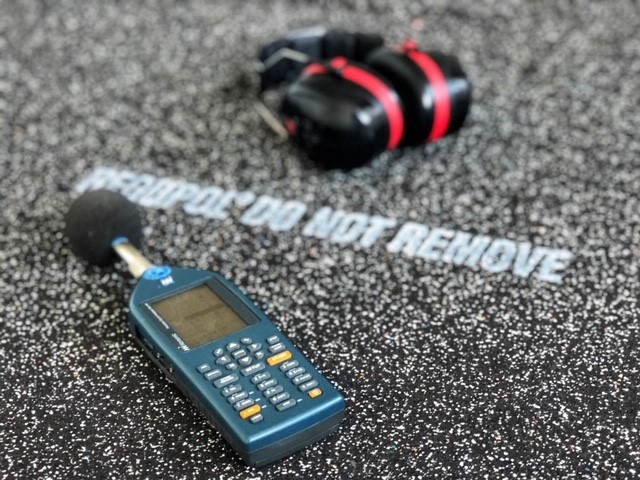Sound Insulation Testing for Approved Document E?
How is Sound Insulation Testing Undertaken for Approved Document E?
Sound insulation testing is normally required as part of Pre-Completion Testing (PCT) when a building has been newly constructed or converted to create dwellings that abut via floor and/or walls.
In England and Wales, the Building Regulations Approved Document E, requires that separating walls and floors must achieve minimum performance standards for airborne and impact sound insulation. This is achieved by pre-completion sound insulation testing of the finished construction project. One way of demonstrating that a company is competent to undertake the Part E sound testing, is by having UKAS accreditation. APT is UKAS accredited to undertake sound insulation testing, our accreditation number is 4340. Here is a link to the UKAS website showing our multiple UKAS accreditations.

How we carry out Sound Insulation Testing
Airborne Sound Insulation Testing (Floors and Walls):
Firstly, a controlled noise is generated by an amplifier and loudspeaker across a broad range of frequencies. The generated noise is very loud and can be in excess of 105dB. Initial measurements are taken using a Class 1 Sound Level Meter within the ‘source room’ followed by further measurements in the ‘receiver room’ which is on the other side of the wall and/or or floor in the adjacent dwelling. The source room speaker position is then changed and the sound level measurements repeated either side of the partition under test in-line with Building Regulation Part E.
Background noise level measurements are made using a sound level meter in the receiving room and are used to apply appropriate corrections for external sound such as traffic or industrial background noise. Thereafter, reverberation time measurements are undertaken d within the receiving room using the sound source and a sound level meter to determine the corrections that must be applied to account for the characteristics and absorptiveness of the room. This measures the time taken for sound to decay by 60dB.
The difference in the two airborne noise levels is then corrected for background and reverberation characteristics determines the airborne sound insulation performance of the wall, or floor. A greater airborne noise difference between the source room and the receiver room determines a higher airborne sound insulation performance, e.g. Approved Document E requires you achieve a figure greater than for example building regulations require you achieve a figure greater than 45dB (Dntw +Ctr) on new build projects and 43dB (Dntw +Ctr) for conversion projects.
Impact Sound Insulation Testing (Floors Only):
This type of sound insulation testing is different, a calibrated ‘tapping machine’ which comprises of five ‘hammers’ driven up and down by an electric motor is used to “tap” the floor surface by applying a known force on the floor structure – this is meant to simulate footfall on the floor above. The machine is placed in four pre-determined positions. The resulting noise is measured in the dwelling below, using a class 1 sound level meter.
Background noise measurements are made using a sound level meter in the receiving room and are used to apply appropriate corrections for external sound such as traffic and industrial noise. The reverberation time is measured within the receiving room using the sound source and a sound level meter to determine the corrections (the time taken for sound to decay by 60dB) that must be applied to account for the absorptiveness of the room.
The measured noise levels in the receiving room (for impact sound insulation tests), is corrected for background and reverberation characteristics determines the impact sound insulation performance of the floor. Approved Document E requires you achieve a figure lower than 62dB (Lntw) on new build projects and 64dB (Lntw) on conversion projects.
If you would like more information on how to prepare your development for sound insulation testing, please download our checklist of visit our website at: www.aptsoundtesting.co.uk
You can contact us at: info@aptsoundtesting.co.uk or call us on 01525 303905.